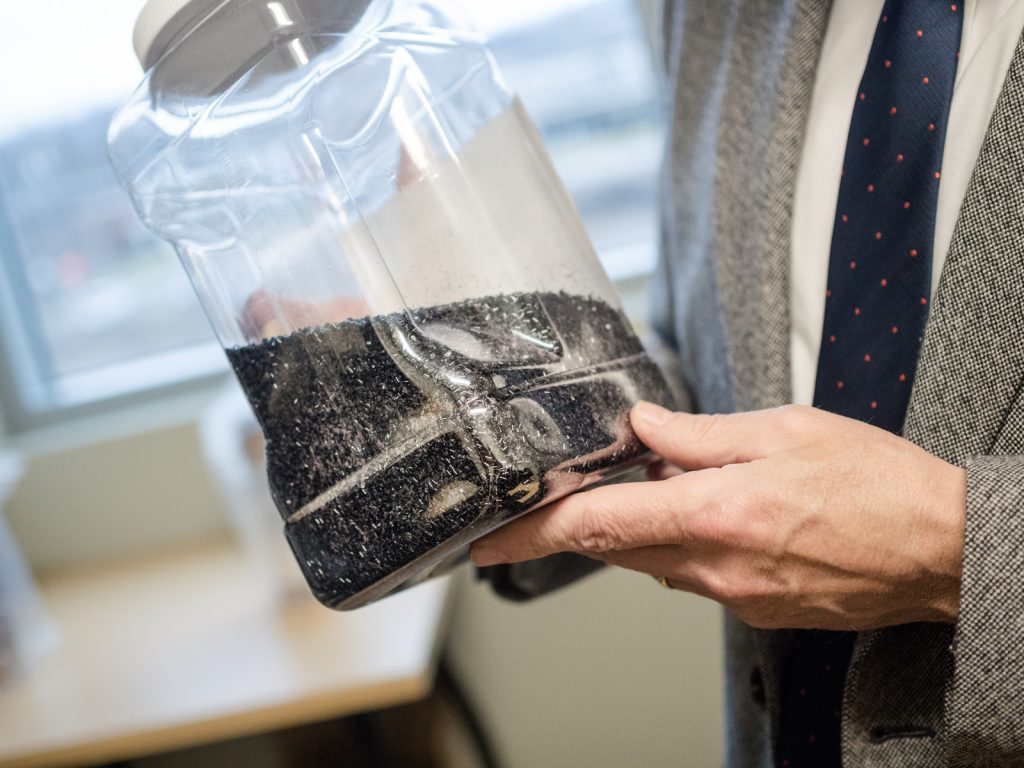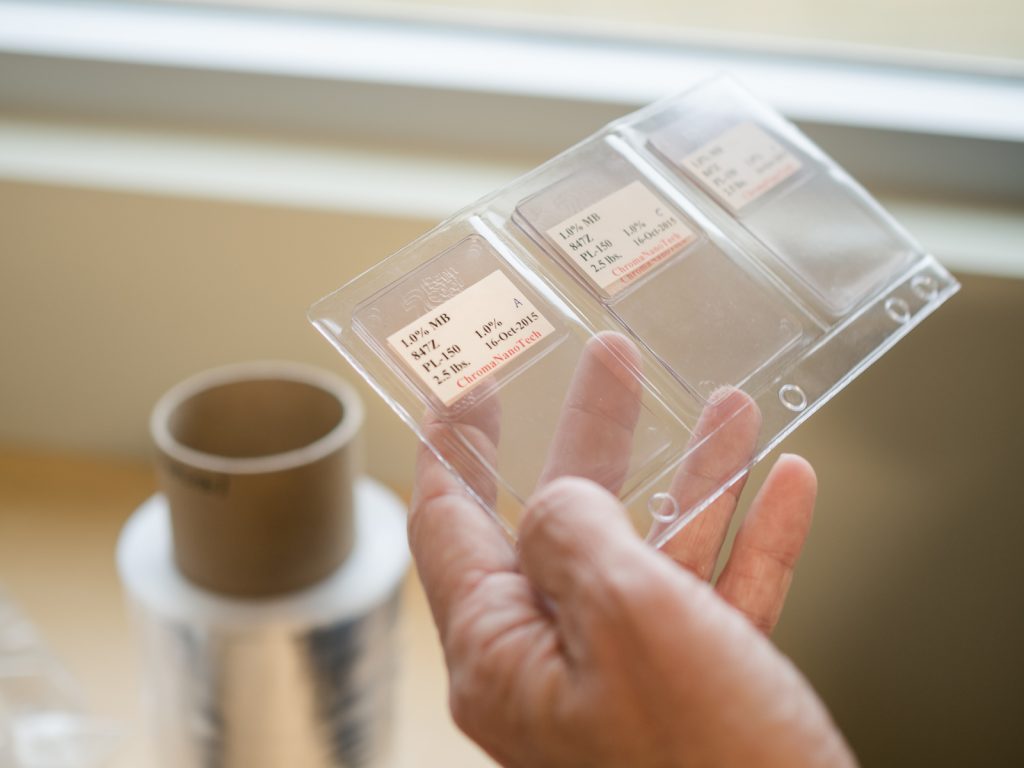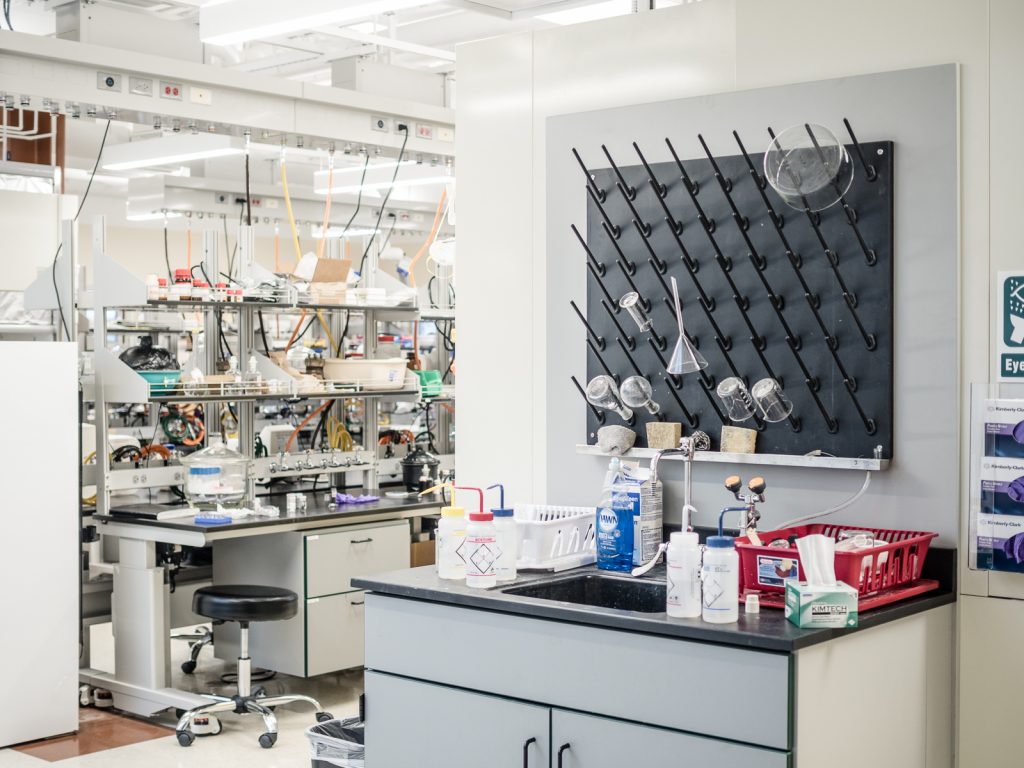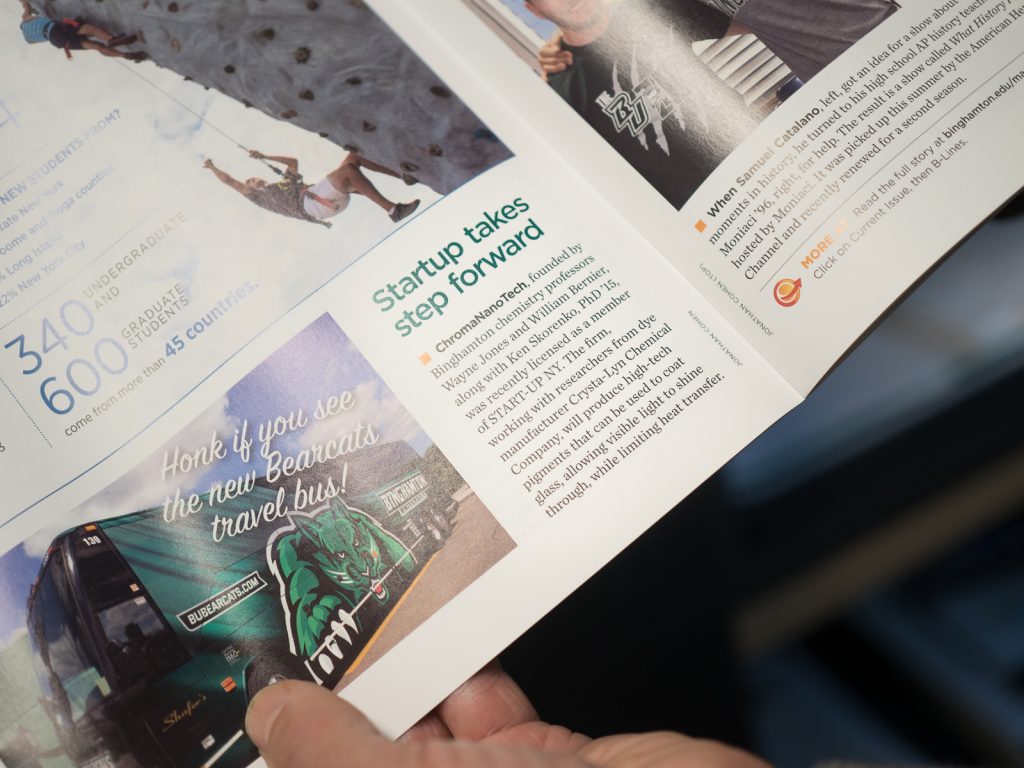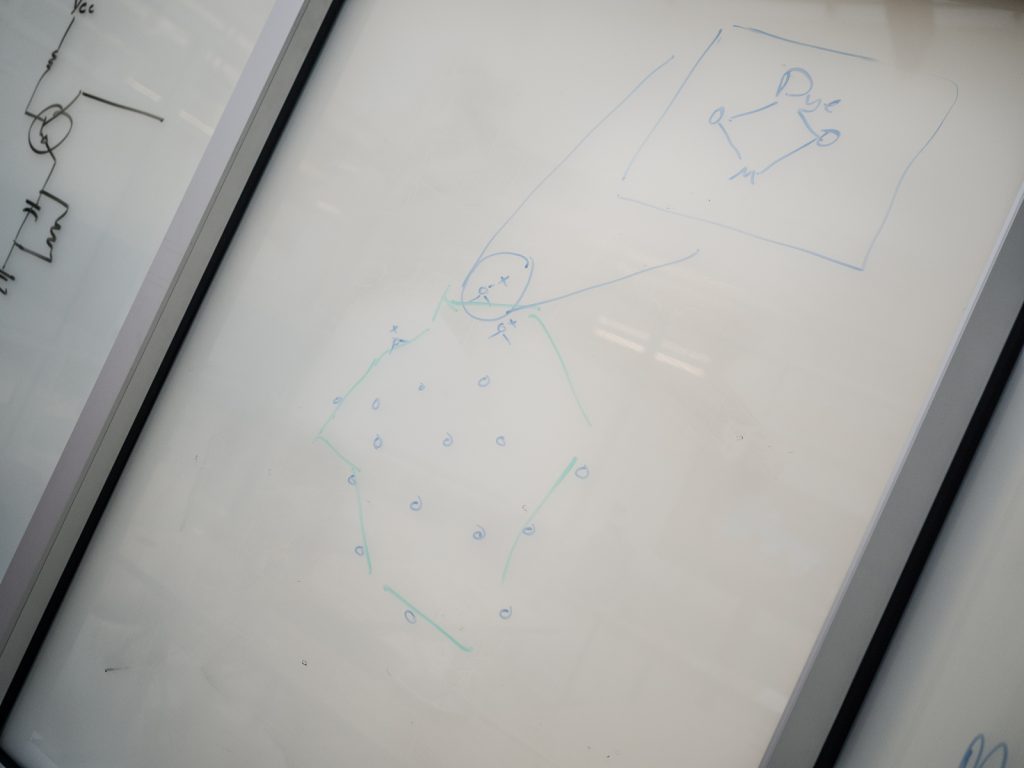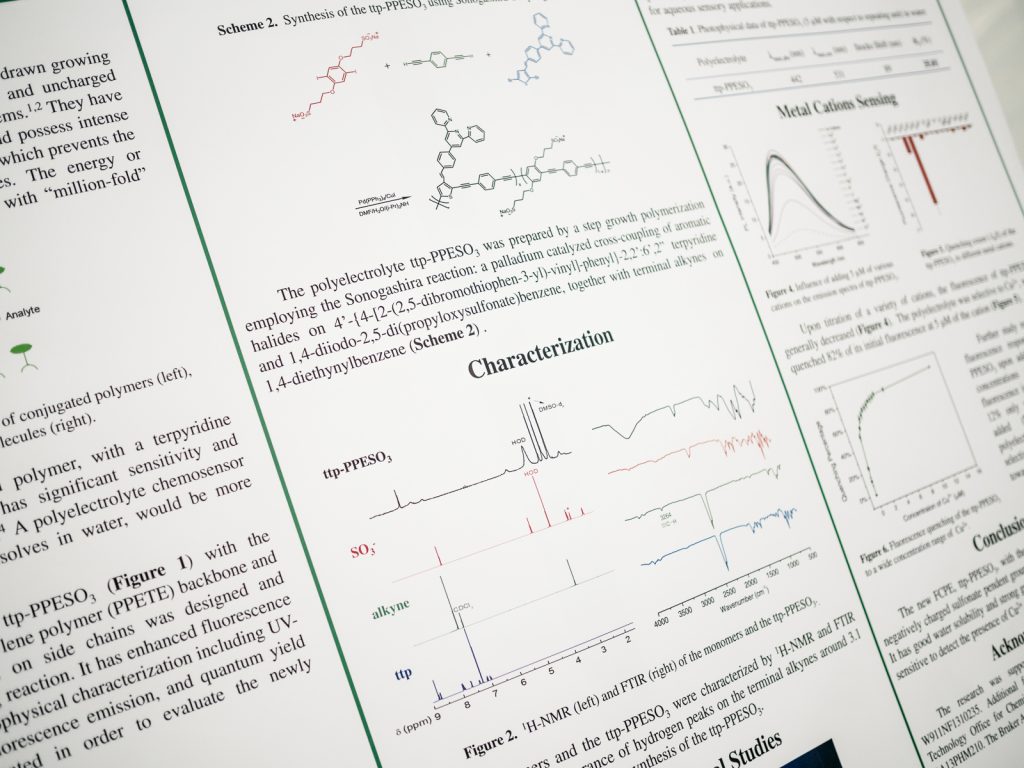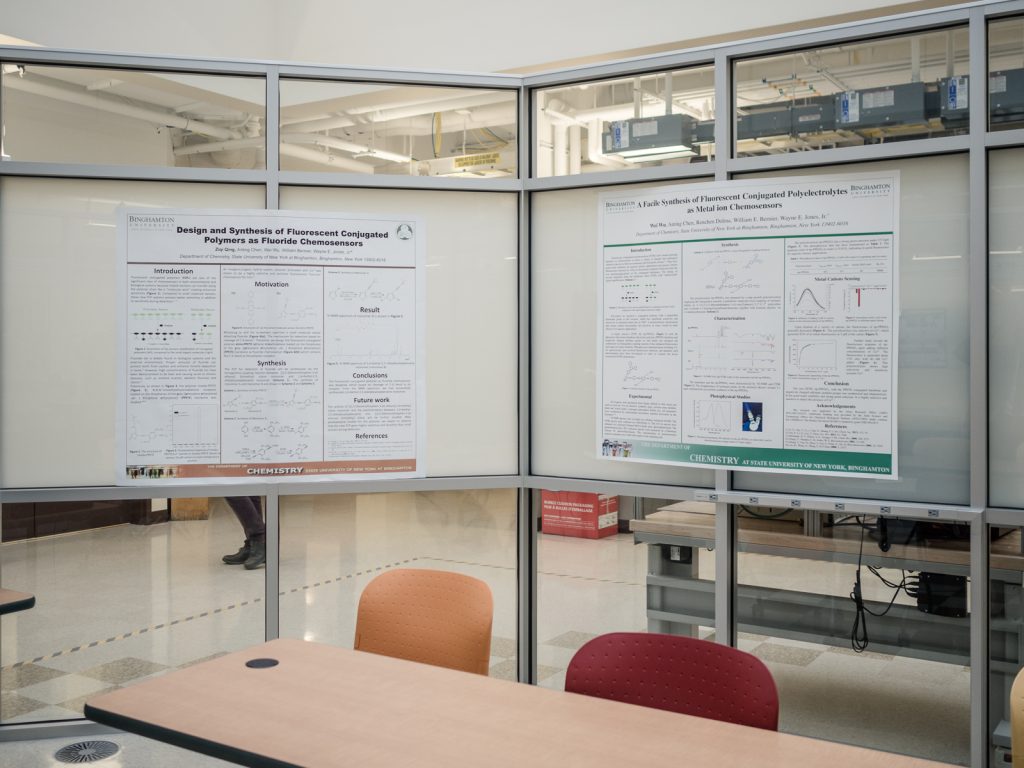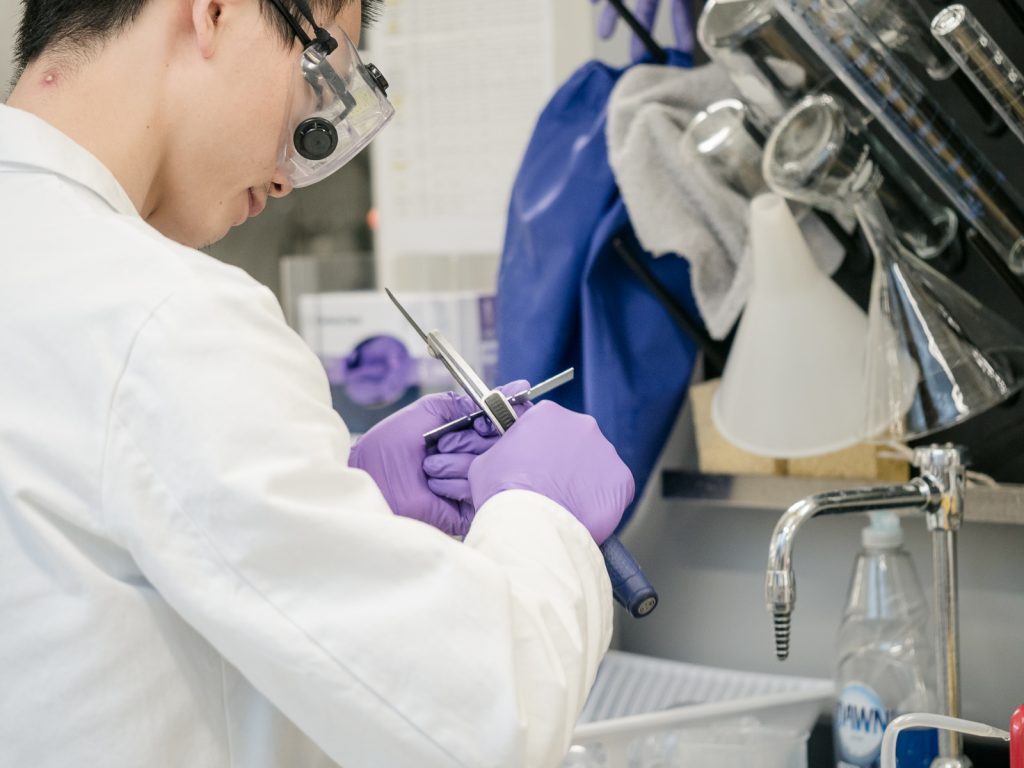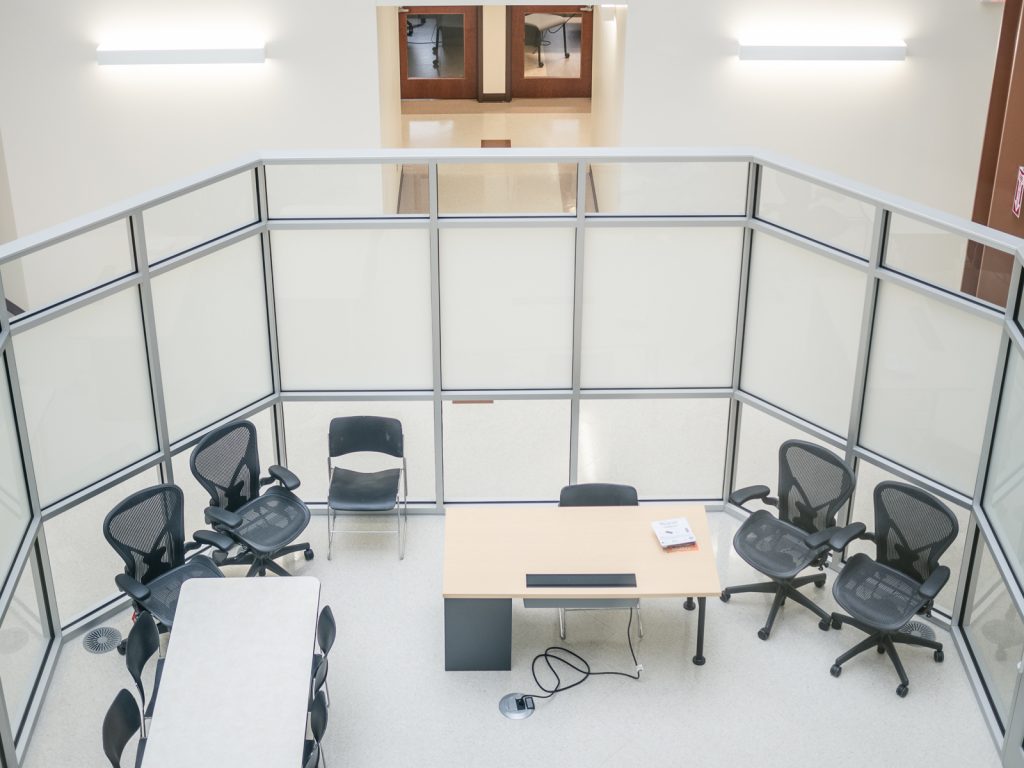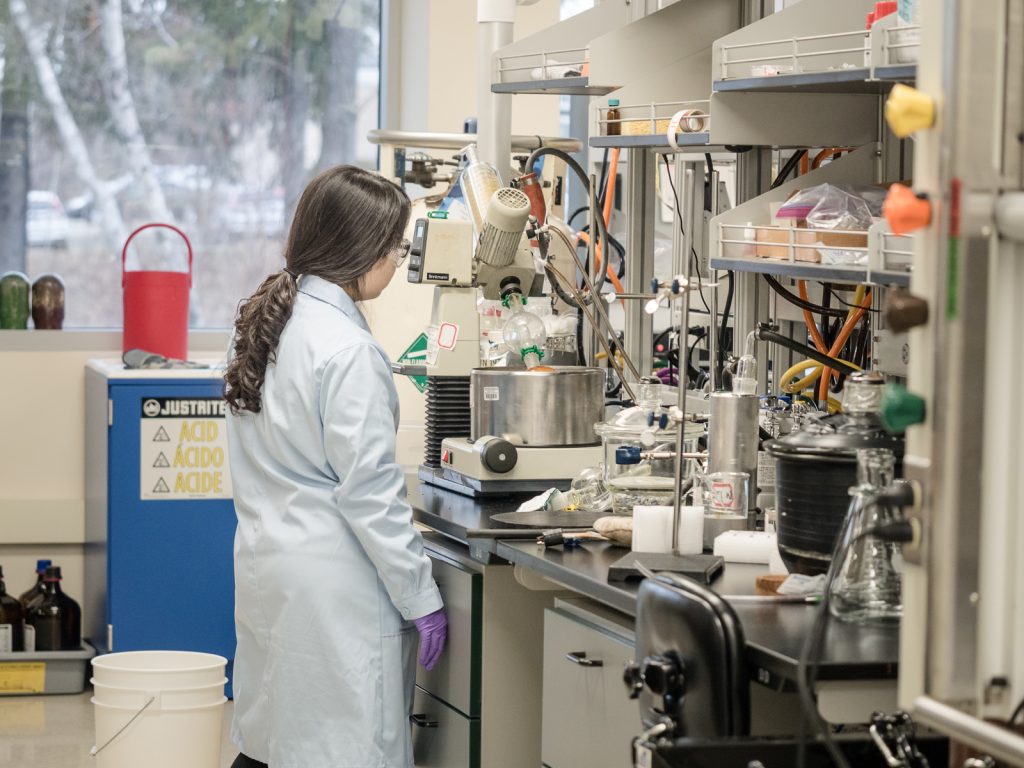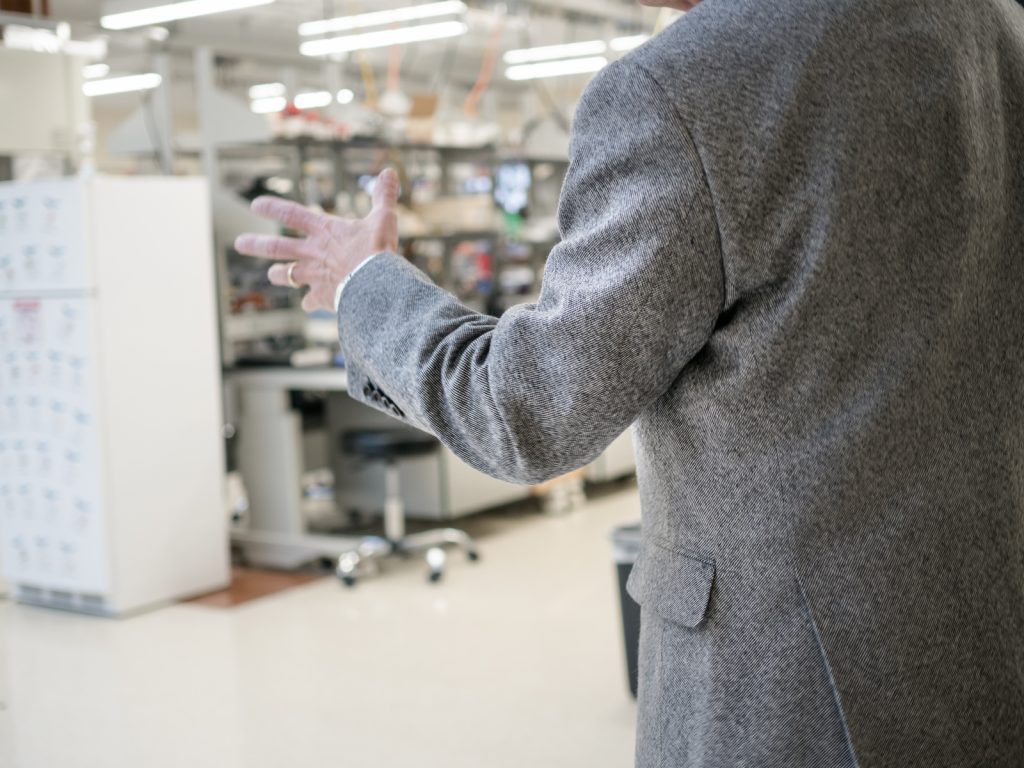ChromaNanoTech
An interview with William E. Bernier, PhD, Chief Executive Officer, ChromaNanoTech.What is ChromaNanoTech?
We thermally stabilize commercially-available dyes and apply them to polymer films that are incorporated into windows. Our prime focus for applications of our technology is passive solar: we can block the infrared light coming through a window which keeps the heat out in the summer and the heat in during the winter. We can even target the wavelengths that are being addressed, so the visible spectrum isn’t being affected. With our technology you get the full daylight spectrum, which you don’t get with current commercial technologies – they block that visible light.
The company itself is a partnership of 5 co-inventors on the patent, and we’re moving toward commercialization.

What problem are you trying to solve?
The currently available technology is expensive, uses expensive materials and the process for manufacturing is expensive as well. The typical cost of the current technology is about $20 per square foot in the marketplace today. For the residential homeowner, this basically doubles the cost of the window.
We think we can do better than this. So we talked with customers and manufacturers in the industry: for over 30 years manufacturers in the marketplace have been trying to improve the price point for the technology and take it to $10 dollars or less per square foot, but no one has been able to get there.
Our technology can get there.
How are you impacting the energy industry?
In the summer, our technology keeps the interior of the building cooler so you save on the electrical power for air conditioning. It can also block heat leaving the building so in the winter you get the energy savings by keeping the heat within the building.
In addition, I’ve had discussions with some of the power companies– they’re very interested in the technology because, particularly in the summer months, this would reduce peak load demands.
In just one summer season the savings would pay for the new window treatment technology.

Who is your primary target audience?
Residential is a big one. There’s two potential ways we could go at that market. The first one is for original equipment: you build a new house, you put in windows. The second is for the installed marketplace today: people have windows in their houses but they aren’t treated with a passive solar technology. We could offer a retrofit kit so that the residential homeowner could apply the new technology for a modest cost.
The average homeowner could reduce their electric costs for AC by 50%, so they can end up with a return on their investment in one season. In just one summer season the savings would pay for the new window treatment technology.
What is the most surprising thing that you learned in your customer research?
The thing that jumped right out at us was this holy grail in the industry: the goal of $10 per square foot. The fact that we have that opportunity is remarkable and really exciting.
What brought your company to the Southern Tier?
The technology originated at the campus here at Binghamton University. The research was funded by a small state grant called a SPIR grant and that enabled a small company, Crysta-Lyn Chemical Company to come and interact here with us at the University. The team filed a patent through Binghamton University and it’s currently patent pending and licensed back to the company, ChromaNanoTech.
What regional resources have supported the growth of your company?
After the SPIR grant, we received a Technology Accelerator Fund Grant (TAF) which helped us continue developing the technology in the lab here at the University. We also participated in Nexus-NY. They led us through the lean startup program which led to all these customer calls. We learned about creating a minimally viable prototype to put something in front of customers to show them what we can do. We put together appropriate budgeting and presentations to go up in front of venture capitalists and various potential corporate investors.That was all through Nexus-NY. That experience led us to a National Science Foundation SBIR grant, which we found out that we won that in December. That $150,000 grant is supporting us right now, allowing us to really kick the activities into high gear, employ some full time people and develop the technology further.
We’ve also worked with mentors from SCORE, Launch-NY, and the Southern Tier Startup Alliance. Those three organizations have provided us with advisors that have helped us every step along the way in making judicious decisions in terms of moving forward in the right order and steps with the business.
How does your business impact the region?
With the grants we have received, we support several graduate students, undergraduates as interns, and we are hiring people right now to work full time to explore the possibilities of the technology.
What is your biggest area of weakness?
That’s a good question. Most of the team is strongly technically oriented, we don’t necessarily have all of the business acumen that we might prefer, particularly for a startup company. Startups have a very unique structure to them. We’re doing things from scratch.
How do you know that you are on the path to success?
Startups are notoriously risky. The typical startup has a one in ten chance of being successful. Our good news is that we’ve got a unique, patent-driven monopoly for this technology in the marketplace. We’re also talking with a lot of corporations, some of which are interested in being customers or investors. That gives us additional confidence.
We could easily get diluted– we have to stay focused on passive solar because we see a huge potential market there: a market that we’ve sized at over $1 billion dollars a year. We are going to have a huge scale up problem. Which is a problem I don’t mind having.
You have to be patient, you have to be aggressive, and the big choice is knowing when to do which.
What is the best advice you’ve ever received as an entrepreneur?
You have to be patient, you have to be aggressive, and the big choice is knowing when to do which. Talking with the business advisors and going through the training programs we have had has been very helpful to discern when to jump and when to pause.

What advice would you give to budding entrepreneurs?
Not everyone has the passion. It takes a certain passion to follow a dream. Not everyone has that capability, but if you do, don’t be bashful going after it. Investigate your market before you spend a lot of money in planning out a product. Identify and establish a market concept that you can easily address and that has substantial financial potential benefits.
Learn more at www.chromananotech.com.

